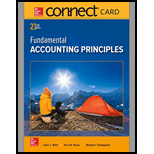
Introduction:
Return on total Assets: The Return on total assets is profitability ratio that measures the percentage of profit earned on average assets invested in the business. Return on asset is calculated by dividing the net income by average total assets. The formula to calculate Return on assets is as follows:
Note: Average total assets are calculated as an average of beginning and ending total assets. The formula to calculate the average total assets is as follows:
Return on total Assets ratio can be broken into its components as follows:
Profit Margin Ratio:
Profit Margin Ratio is a profitability ratio that represents the percentage income earned on the sales. It is calculated by dividing the Net Income by the Sales. The formulas to calculate the Profit margin is as follows:
Asset Turnover Ratio:
Asset Turnover Ratio is an efficiency ratio that represents the sales earned on the average assets invested in the business. It is calculated by dividing the Sales by Average total assets. The formulas to calculate the Asset Turnover Ratio is as follows:
Requirement-1:
To Calculate: The Return on total assets using in its separate components for Samsung for two most recent years
Requirement-2:
To Analyze: The Company’s performance using Return on total assets ratios
Want to see the full answer?
Check out a sample textbook solution
Chapter 15 Solutions
Connect Access Card for Fundamental Accounting Principles
- I need help finding the accurate solution to this financial accounting problem with valid methods.arrow_forwardCan you explain this financial accounting question using accurate calculation methods?arrow_forwardI am looking for help with this financial accounting question using proper accounting standards.arrow_forward

 AccountingAccountingISBN:9781337272094Author:WARREN, Carl S., Reeve, James M., Duchac, Jonathan E.Publisher:Cengage Learning,
AccountingAccountingISBN:9781337272094Author:WARREN, Carl S., Reeve, James M., Duchac, Jonathan E.Publisher:Cengage Learning, Accounting Information SystemsAccountingISBN:9781337619202Author:Hall, James A.Publisher:Cengage Learning,
Accounting Information SystemsAccountingISBN:9781337619202Author:Hall, James A.Publisher:Cengage Learning, Horngren's Cost Accounting: A Managerial Emphasis...AccountingISBN:9780134475585Author:Srikant M. Datar, Madhav V. RajanPublisher:PEARSON
Horngren's Cost Accounting: A Managerial Emphasis...AccountingISBN:9780134475585Author:Srikant M. Datar, Madhav V. RajanPublisher:PEARSON Intermediate AccountingAccountingISBN:9781259722660Author:J. David Spiceland, Mark W. Nelson, Wayne M ThomasPublisher:McGraw-Hill Education
Intermediate AccountingAccountingISBN:9781259722660Author:J. David Spiceland, Mark W. Nelson, Wayne M ThomasPublisher:McGraw-Hill Education Financial and Managerial AccountingAccountingISBN:9781259726705Author:John J Wild, Ken W. Shaw, Barbara Chiappetta Fundamental Accounting PrinciplesPublisher:McGraw-Hill Education
Financial and Managerial AccountingAccountingISBN:9781259726705Author:John J Wild, Ken W. Shaw, Barbara Chiappetta Fundamental Accounting PrinciplesPublisher:McGraw-Hill Education





